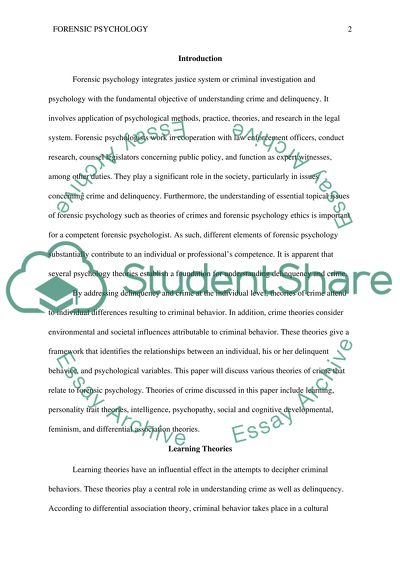Cite this document
(“Theories of Crime Research Paper Example | Topics and Well Written Essays - 2500 words”, n.d.)
Retrieved from https://studentshare.org/psychology/1402927-choose-any-topic-in-the-area-of-forensic
Retrieved from https://studentshare.org/psychology/1402927-choose-any-topic-in-the-area-of-forensic
(Theories of Crime Research Paper Example | Topics and Well Written Essays - 2500 Words)
https://studentshare.org/psychology/1402927-choose-any-topic-in-the-area-of-forensic.
https://studentshare.org/psychology/1402927-choose-any-topic-in-the-area-of-forensic.
“Theories of Crime Research Paper Example | Topics and Well Written Essays - 2500 Words”, n.d. https://studentshare.org/psychology/1402927-choose-any-topic-in-the-area-of-forensic.


